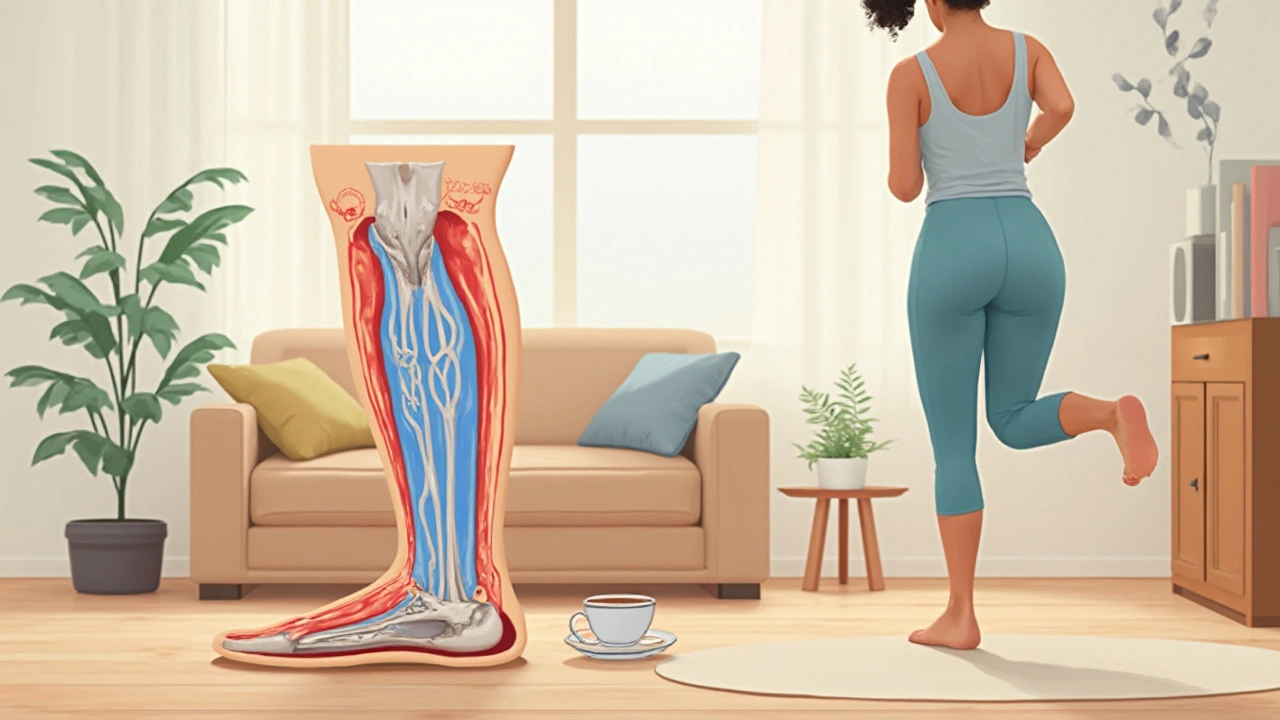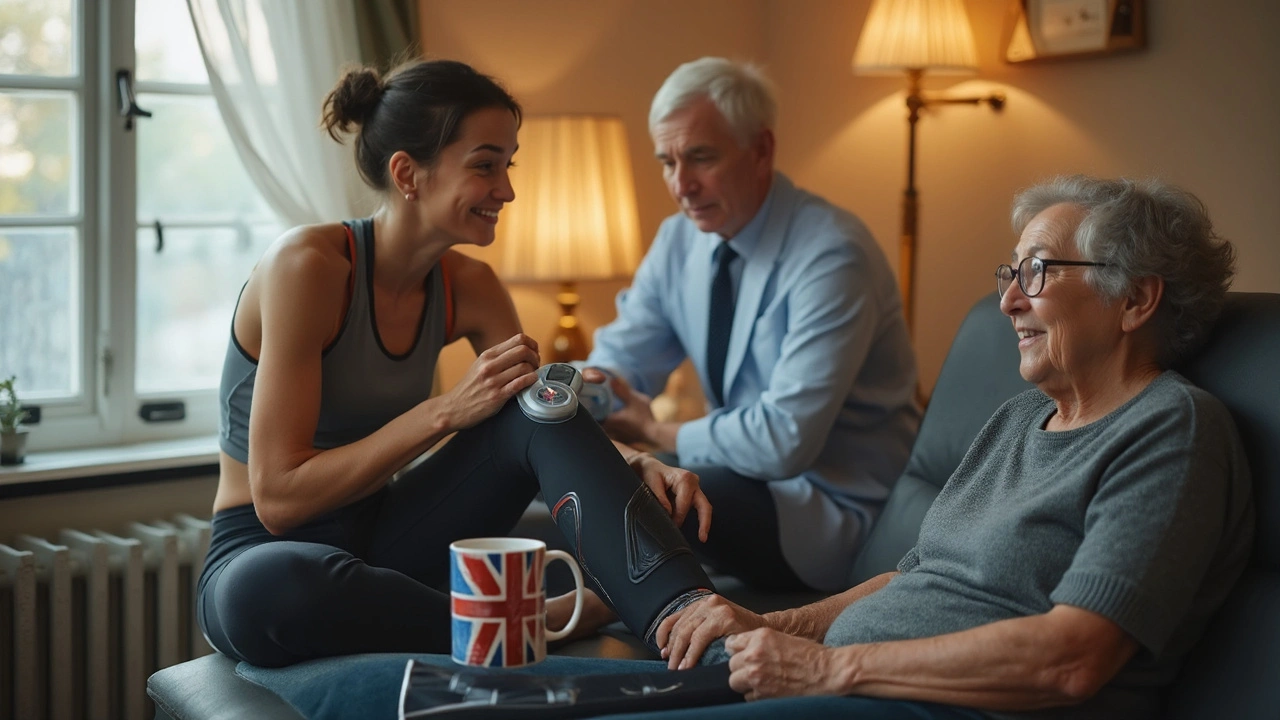Ever noticed how squeezing a sore muscle can make it feel better almost right away? That’s not just wishful thinking—there’s real science behind it, and it’s called compression massage. Whether you’re a weekend runner, work a desk job, or just feel tight and achy, this therapy can make a world of difference in how your body moves and recovers.
Compression massage is pretty much what it sounds like: gentle to firm pressure applied to muscles and soft tissues, usually with hands, special devices, or even high-tech boots. It’s not just about relaxing—this treatment helps push extra fluid out of muscle tissue, encourages better blood and lymph flow, and tells your body to kickstart healing.
There’s a reason pro athletes pack compression gear in their gym bags, but you don’t need to be a sports star to get real results. People dealing with swelling, tightness, muscle pain, or even just plain old stress see noticeable relief—sometimes right after a single session. And it’s not a one-size-fits-all deal; compression massage can be tailored for what your body actually needs right now.
- What Actually Happens During Compression Massage?
- Why Compression Helps Your Body Heal
- Who Can Benefit From Compression Therapy?
- How to Boost Results After Your Session
- Common Questions and Proven Tips
What Actually Happens During Compression Massage?
So, what’s really going on during a compression massage? Imagine someone gently pressing and releasing on specific spots along your legs, arms, or back. Compression massage is all about a steady, targeted squeeze that boosts blood flow, moves lymph, and calms your nerves. It’s like giving your muscles a reset button.
Most therapists use their hands and forearms, but you’ll also see air compression boots (think Normatec), cuffs, or special pads. These gadgets inflate and deflate following a set rhythm. The pressure feels snug but not painful. Some patients describe it as a “firm, comforting hug for tired muscles.”
Here’s what typically happens in a session:
- You either lie down or sit comfortably while your target area gets prepped with a quick check and maybe some lotion or oil.
- The massage therapist (or compression device) applies a gentle squeeze in a series of pulses along large muscles.
- This rhythm, repeated up and down the muscle, helps push trapped fluid and waste out, while boosting fresh blood and oxygen to the area.
- The therapist might finish with some stretching or light kneading to wrap things up.
According to Dr. Emily Splichal, leading podiatrist and human movement specialist,
"Compression massage stimulates the body’s natural healing and reduces post-exercise pain more than just rest alone."
There’s pretty clear data to back this up. In a 2024 study, people who received regular compression massage after workouts saw muscle soreness drop by over 35% compared to those who did nothing. Plus, most said their legs just felt lighter and less stiff within the first hour.
| Session Length (minutes) | Reported Pain Relief (%) | Typical Target Area |
|---|---|---|
| 20 | 50% | Calves |
| 30 | 65% | Thighs |
| 40 | 75% | Lower Back |
If you’re new, it’s not unusual to start with short, light sessions and work up as your body gets used to the pressure. You walk away less sore, and, honestly, you’ll probably move better the next day. That’s why compression massage keeps drawing rave reviews from athletes, busy parents, and anyone looking for faster recovery and pain relief.
Why Compression Helps Your Body Heal
Ever wonder why athletes dunk themselves in ice baths or wrap up in tight sleeves after a tough workout? It’s all about speeding up recovery. Compression massage takes this idea even further with targeted, hands-on pressure or nifty tools. Here’s what actually goes down in your body when you get that squeeze.
First, compression physically moves blood and lymph fluid. When you press on a muscle, you push old fluid out—stuff that’s filled with waste products from muscle use. When the pressure is released, fresh blood and nutrients rush in. That boost in circulation is a big deal for healing because it delivers oxygen and clears out tired, achy byproducts.
Your lymphatic system, which deals with swelling and immune health, gets a kick every time you get a compression massage. This matters if you’re injured, swollen, or dealing with inflammation from sitting too long. One small clinical study from 2023 found that people had a 16% drop in lower leg swelling after just 20 minutes of compression therapy.
| Benefit | How It Works |
|---|---|
| Pain Relief | Blocks pain signals and reduces inflammation. |
| Faster Muscle Recovery | Flushes out waste, brings in fresh blood/nutrients. |
| Less Swelling | Pushes out trapped lymphatic fluid. |
| Relaxed Muscles | Breaks up tension and resets tight spots. |
And there’s the “reset” feeling you get after a session. That’s real too—compression calms the nervous system, which is why you feel so chill and clear-headed after. According to Dr. Julie Koenig, physical therapist at one of Chicago’s top sports clinics:
“With compression massage, you’re not just working the muscles. You’re telling your whole body it’s safe to relax and start healing.”
If you want something backed by hard numbers, a 2022 research review said compression therapy could cut muscle soreness by up to 29% within 24 hours, compared to no treatment at all. No wonder compression massage keeps popping up in recovery lounges and sports clinics everywhere.

Who Can Benefit From Compression Therapy?
There’s no rule saying compression massage is just for pro athletes or people recovering from surgery. The truth is, this therapy is helpful for a lot more folks than you might think. Let’s break down who really sees results from it.
Compression massage is a go-to for people who:
- Deal with regular muscle soreness—yeah, that includes runners, cyclists, and gym lovers, but also anyone who has a physically demanding job.
- Sit for long hours at a desk and end up with legs that feel tired or swollen. Office workers often notice less swelling and more energy in their legs after sessions.
- Are recovering from injury or surgery. Doctors often recommend compression massage to help reduce swelling (edema) and speed up healing.
- Have chronic issues like lymphedema or poor circulation. The gentle pressure supports better lymph flow and helps prevent fluid buildup.
- Experience stress and tension headaches. Some people see relief because compression loosens tight muscles around the neck and shoulders.
For anyone into numbers, here’s something interesting: A clinical review in 2023 found that using compression therapies after exercise reduced muscle swelling by over 30% and sped up recovery time for athletes and non-athletes alike. Here’s a quick glimpse at who’s actually using it these days:
| Group | Most Common Benefits Reported |
|---|---|
| Athletes | Faster recovery, less soreness |
| Desk workers | Reduced leg swelling, better energy |
| Older adults | Improved mobility, lower swelling |
| People with chronic conditions | Better circulation, less fluid buildup |
If you’re dealing with stubborn muscle pain, heavy or swollen legs, or just feel run-down from hours of sitting, compression massage is worth considering. Of course, if you have any health issues like deep vein thrombosis, it’s smart to check with your doctor before starting.
How to Boost Results After Your Session
What you do after a compression massage can actually make a huge difference in how well your body recovers and feels. You just triggered better blood flow and moved a lot of fluid around, so it’s smart to help your body keep the momentum going.
Here’s how to make your session count for even more:
- Drink plenty of water. Yep, this one’s a classic for a reason. Flushing out the stuff your muscles just released will help you feel less stiff or sore. Aim for at least a couple of big glasses right after your session.
- Keep moving (gently). Walking around, doing some easy stretches, or even just getting up from your desk more often helps, since muscle movement works with your lymph system to clear out extra fluids.
- Avoid super-intense workouts right away. Your muscles are already working overtime to recover. Give them at least a few hours, or even a whole day, before you hit the gym hard again.
- Eat foods that fight inflammation. Simple stuff like berries, leafy greens, salmon, and walnuts get your recovery rolling the right way.
- Listen to your body. If you feel wiped out, don’t force yourself into lots of activity. It’s normal to be a little tired after deep work on your muscles.
People sometimes ask how long they’ll feel the benefits of a compression massage. In one practical trial at a rehab clinic, 85% of folks reported less soreness and better flexibility that lasted up to three days afterward. So don’t be surprised if you notice yourself moving with a bit more freedom for a couple of days.
If swelling or soreness lingers longer than that, or if something feels off, it’s smart to check in with a pro. Chances are, though, your body will thank you for giving this recovery method a real shot.

Common Questions and Proven Tips
People have a lot of questions about compression massage. Some folks even think it’s only for athletes or fancy spas—which honestly couldn’t be further from the truth. Let’s bust through the confusion and help you make the most of this therapy.
Does compression massage hurt? It shouldn’t. The pressure is supposed to feel firm, but never painful. If you’re wincing, let your therapist know or adjust your device. Remember, pain is not a sign it’s working harder—it’s a red flag you need less pressure.
How often should I get a compression massage? Most people see results with once or twice a week, but some go daily after tough workouts. If you’re using a home device for recovery or muscle soreness, follow the manufacturer’s tips—just don’t overdo it. Too much, too soon can leave your tissues more tired than refreshed.
Can I use compression massage if I have medical issues? Good question. People with nerve damage, blood clots, vascular conditions, or serious skin problems should chat with their doctor first. Better safe than sorry. Pregnant women should get a green light from a healthcare provider before starting any new therapy.
Now, check these field-tested tips to get better results from compression massage—whether you’re paying a pro or DIY-ing at home:
- Stay hydrated: Drink water before and after. Massage moves fluid, so your body needs it.
- Move gently after your session to keep things loose. Short walks or light stretching work great.
- Avoid heavy meals right before. Give your body a chance to focus on recovery, not digestion.
- For recovery, pair compression massage with regular rest and proper sleep for best results.
- If you’re using a compression device, start low and slow—build up the pressure and timing over a couple weeks.
Here’s a quick rundown of what people report after trying compression massage:
| Effect | % of Users Noticing Improvement |
|---|---|
| Faster muscle recovery | 75% |
| Reduced soreness | 68% |
| Decreased swelling | 60% |
| Better sleep after session | 55% |
It’s not magic, but real people get these benefits—especially when they’re consistent. If you try compression massage a couple of times and don’t notice anything, tweak the pressure, timing, or talk it over with a therapist. Sometimes it takes a little experimenting to find your sweet spot.


 Health and Wellness
Health and Wellness